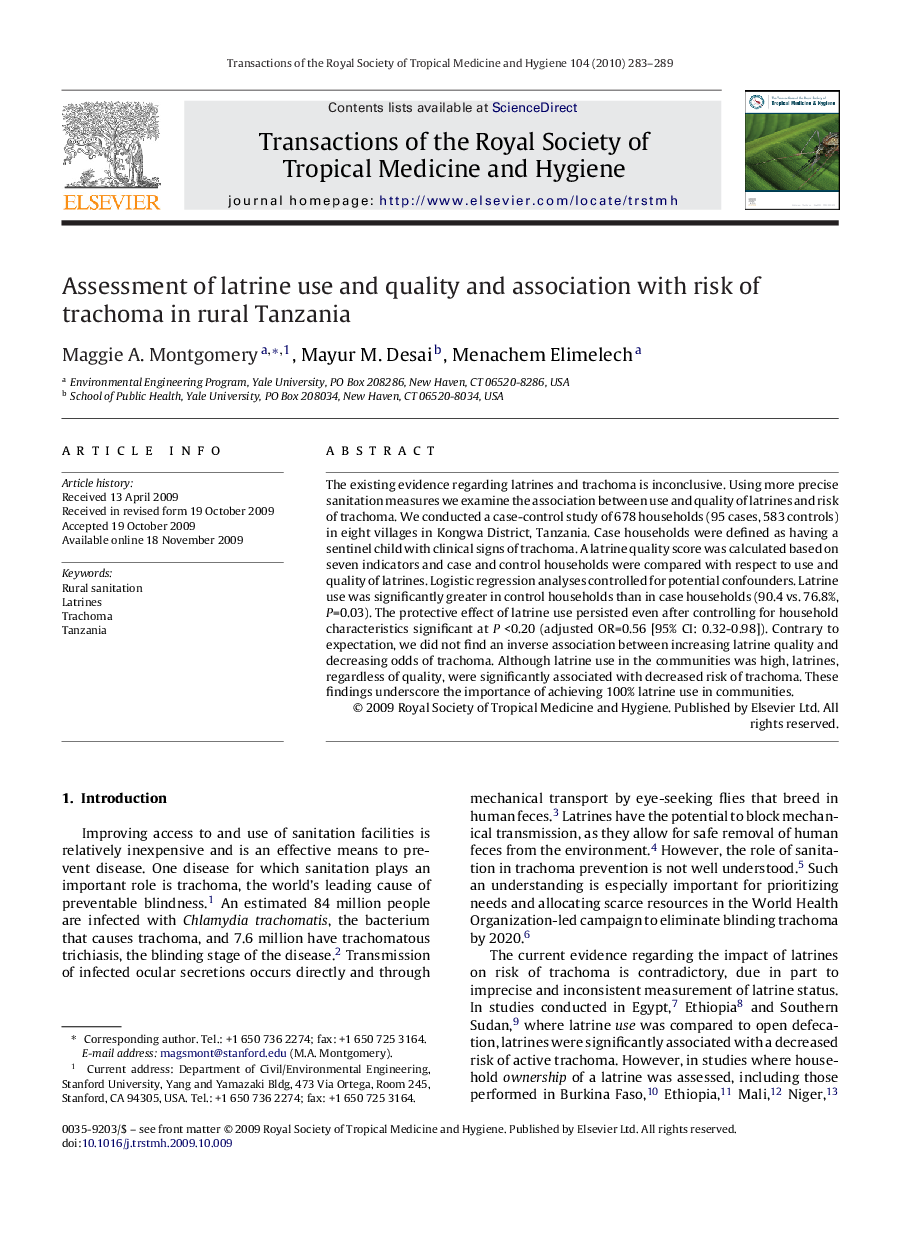| Article ID | Journal | Published Year | Pages | File Type |
|---|---|---|---|---|
| 3420690 | Transactions of the Royal Society of Tropical Medicine and Hygiene | 2010 | 7 Pages |
The existing evidence regarding latrines and trachoma is inconclusive. Using more precise sanitation measures we examine the association between use and quality of latrines and risk of trachoma. We conducted a case-control study of 678 households (95 cases, 583 controls) in eight villages in Kongwa District, Tanzania. Case households were defined as having a sentinel child with clinical signs of trachoma. A latrine quality score was calculated based on seven indicators and case and control households were compared with respect to use and quality of latrines. Logistic regression analyses controlled for potential confounders. Latrine use was significantly greater in control households than in case households (90.4 vs. 76.8%, P=0.03). The protective effect of latrine use persisted even after controlling for household characteristics significant at P <0.20 (adjusted OR=0.56 [95% CI: 0.32-0.98]). Contrary to expectation, we did not find an inverse association between increasing latrine quality and decreasing odds of trachoma. Although latrine use in the communities was high, latrines, regardless of quality, were significantly associated with decreased risk of trachoma. These findings underscore the importance of achieving 100% latrine use in communities.
